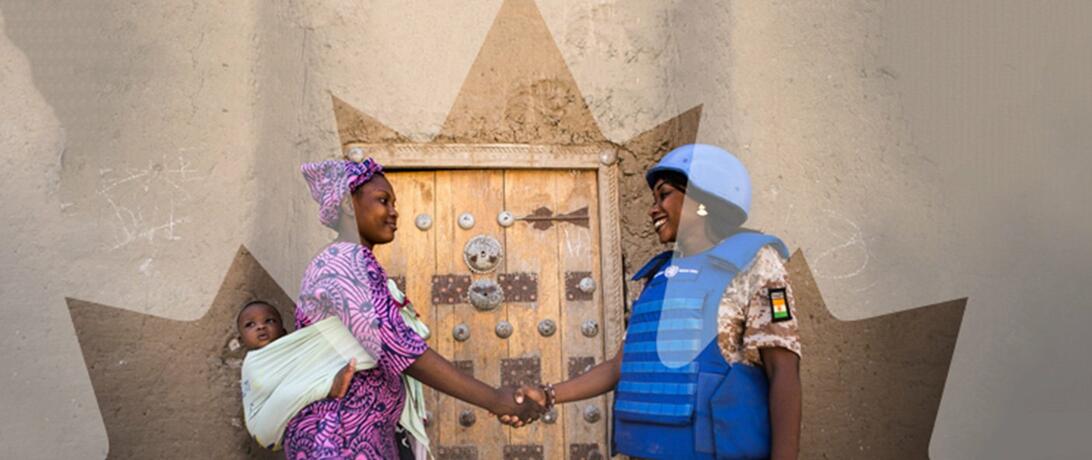
Our Secure Future fellow Sarah Williamson reflects on Canada's Elsie Initiative and barriers to women in armed forces.
For two decades, the United Nations has been trying to increase the number of uniformed women in peacekeeping operations with little success. Despite calling for an increase in women peacekeepers in 2000, UN Security Council Resolution 1325 did not result in remarkable increases in the number of women serving. Today, only 4 percent of uniformed military personnel and 11 percent of police in UN peacekeeping missions are women. In October 2015, the UN set new targets for women to make up 15 percent of military personnel and 20 percent of police contributions (SCRES 224). Achieving these new targets will require concerted effort on behalf of troop and police contributing countries (TPCCs).
Sahana Dharmapuri, Director of Our Secure Future, laid out several core challenges for increasing women’s role in her report Not Just a Numbers Game:
- Lack of understanding on Women, Peace and Security and gender equality
- Social norms that perpetuate gender inequality
- Missing data and analysis on female uniformed personnel
- Challenges to the recruitment and retention of women in national forces
While these obstacles are well-known, before Canada launched the Elsie Initiative, there was little momentum for developing a strategy to overcome these obstacles. As part of its feminist approach to foreign policy, Canada has made it a priority to accelerate the pace of change in peacekeeping deployments to help the UN meet its gender targets. Canada has named the effort the “Elsie Initiative” after Elsie MacGill, an electrical engineer who led the production of Hawker Hurricane fighter planes during World War II and served on the Royal Commission on the Status of Women. Despite Elsie’s many engineering achievements, she wanted to be remembered for her commitment to the rights of women.
This November, the Netherlands Ministry of Foreign Affairs co-hosted a Research to Action design workshop with the Government of Canada to discuss the development of a new $15 million trust fund being established by the UN to overcome barriers to female participation. The workshop reviewed findings from a baseline study produced by the Geneva Centre for the Democratic Control of Armed Forces (DCAF) outlining 14 barriers with recommendations for making progress. These barriers include:
- Lack of information on deployment opportunities
- Corruption in deployment selection
- Women being seen as needing protection rather than as being protectors
- Years of required experience for deployment
- Physical fitness tests
- Criteria for passing the Safety Awareness and Training Exam (SAAT)
- Ostracism within training cohorts
- Inadequate accommodations, facilities, and equipment
- Lack of specific medical care
- Lack of adequate family-friendly policies
- Sexual and gender-based harassment
- Unequal opportunities on deployment and missed opportunities at home
- Unreasonable expectations of female forces on mission
- Lack of support networks
The workshop was attended by representatives from troop and police contributing countries, including Ghana and Zambia, which have been selected as Elsie partners to test new approaches. Each of these countries has agreed to complete a barrier assessment that will further outline steps for advancing women’s participation. Other countries that contribute troops and police forces will eventually be able to apply for the UN Trust Fund, which is likely to require that they complete a barrier self-assessment with the support of Elsie Initiative partners in order to provide evidence showing what changes will produce the greatest results.
During the workshop, experts agreed that the best opportunity to accelerate gains in the number of women would be to include females in the deployment of whole contingents. There are two mechanisms of force generation for UN peacekeeping; the deployment of individuals on mission and deployment of units or whole contingents made up of hundreds of people. This means that the largest number of force contributors today; Ethiopia, Bangladesh, and South Africa; have the greatest likelihood of producing short-term results.
Participants also discussed the opacity of the recruitment process in many contexts, given the lucrative salary that soldiers and police receive for deploying to a peacekeeping mission compared to their base pay at home. Providing a visual map of the recruitment process, including the information and entry points, would lead to greater transparency and understanding of how long it would take the personnel system of a TPCC to establish a new pipeline of female candidates. While the forthcoming barrier assessments are meant to address gaps, the UN Department of Peacekeeping Operations (DPKO) can do more to highlight what works. For example, Ghana is advancing its commitment to gender equality by training women in advance of the UN exam, ensuring that more women have the requisite skills.
The Elsie Initiative is made up of a Contact Group of 11 member states including Argentina, France, Ghana, the Netherlands, Norway, Senegal, South Africa, South Korea, Sweden, the United Kingdom, and Uruguay. Our Secure Future recommends that the United States join this group and contribute to the forthcoming UN Trust Fund. This could be done within the framework of the current Global Peacekeeping Operations Initiative (GPOI) jointly managed by the US Department of Defense and Department of State. While the US contributes a small number of military observers to UN missions, the US could also contribute civilian personnel with expertise on Women, Peace and Security to help the UN meet its gender-specific targets.
Article Details
Published
Topic
Program
Content Type
Opinion & Insights